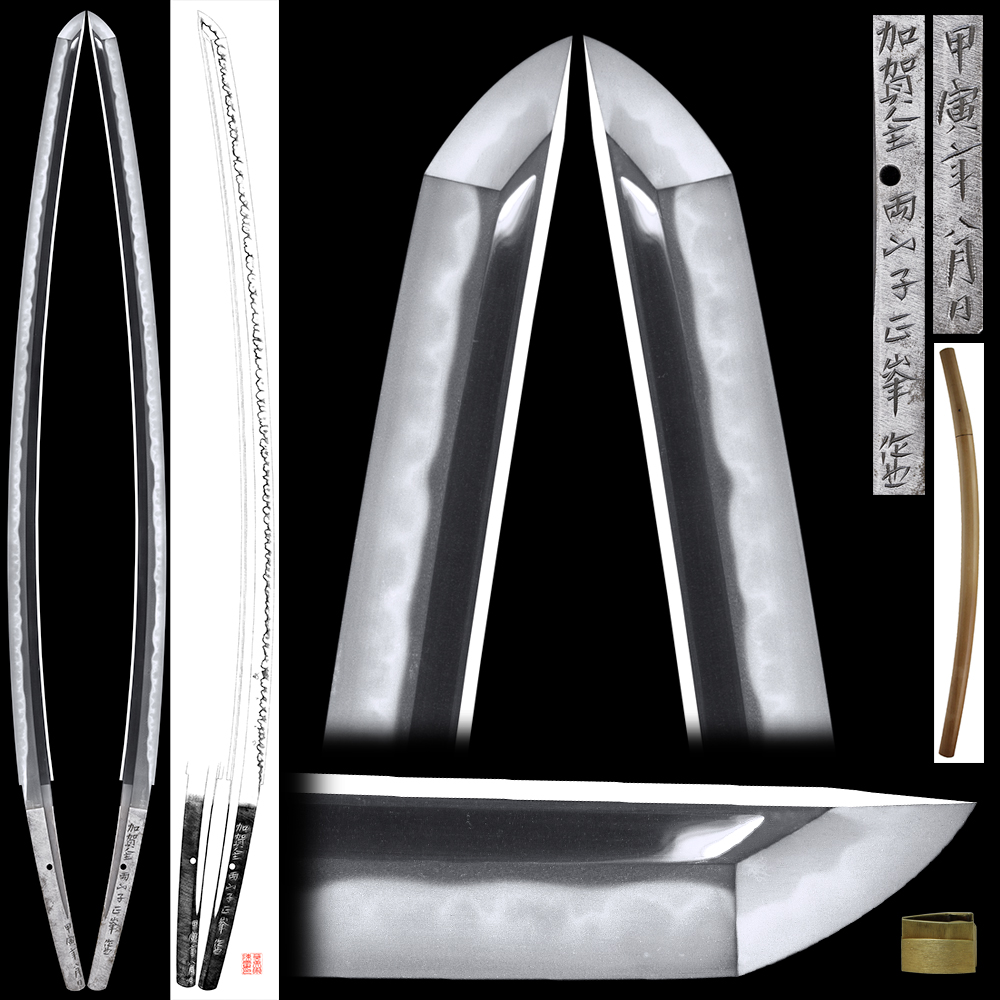Tachi : Kaga Jyu Ryosanshi Masamine Saku No/Koutora Nen 8 Gatsuhi
2017/01/26
Tachi in Shirasaya (Human national treasure)(Mukansa swordsmith.)
Signature : Kaga Jyu Ryosanshi Masamine Saku No.
Koutora Nen 8 Gatsuhi
(We divide 4 sections for each sword as Saijyo saku, Jyojyo saku Jyo saku and regular saku)
This sword belongs to Saijyo saku (the top ranking)ranking.
The blade was polished by highest polisher.
Habaki : Gold foiled double habaki.
Blade length : 74.9 cm or 29.4 inches.
Sori : 3.0 cm or 1.19 inches.
Mekugi : 1
Width at the hamachi : 3.24 cm or 1.26 inches.
Width at the Kissaki : 2.37 cm or 0.93 inches.
Kasane : 0.86 cm or 0.33 inches.
Era : Gendai (1974)
Shape : The blade is wide and thick with deep sori ikubi kissaki nice shape.
Jigane : Koitame hada well grained with jinie attach beautiful nice texture.
Hamon : Nie deki gunome midare and Cyoji midare mixed with ashi, and yo work.
Boshi is midarekomi style.
Special feature : Sumitani Masamine, born Sumitani Yoichiro in 1921 was a swordsmith in Ishikawa pref.
Major in mechanical engineering and graduated from Ritsumeikan university in Kyoto, he entered the researce institute of Japanese sword on the campus in 1941 and learned under Sakurai Masayuki, the Second son of a famous swordsmith Sakurai Masatsugu.
After that he moved to Onomichi city in Hiroshima pref.
And learned forging and polishing sword at Kokoku Nihonto Tanren-Jo with his sworn brother Yokota Masamitsu.
In the postwar Japan, Masamine set up his own smithy named Sanryutei in 1956 and studied Bizen-den.
He forged special swords to dedicate the Ise-jingu shrine in 1964, 1966, 1969 and 1989.
He became a Mukansa-tosho and a judge of the annual sword-making competition held by NBTHK in 1966.
In pursuit of Bizen-den, he completed especially choji-midare hamon called Sumitani-Choji.
He also studied old iron manufacturing in Kamakura period and reproduced classical texture of jitetsu.
Masamine was designated one of a preservers of Important Intangible Cultural Assets, popularly known as Living National Treasures in 1981.
He passed away in 1998.
This sword remind us Kamakura period Ichiminji.
The blade is wonderful shape ikubi kissaki Ichimonji srtle.
Jigane was made his own tamahagane in his own factory.
Hamon is excellent gunome cyoji midare.
We recommend this human national treasure sword.
Gurantee signature.
Aoi Art estimation paper : whole Oshigata.



